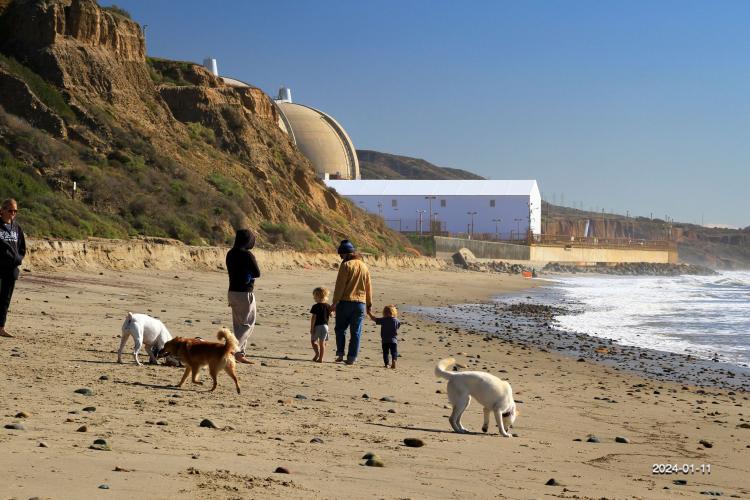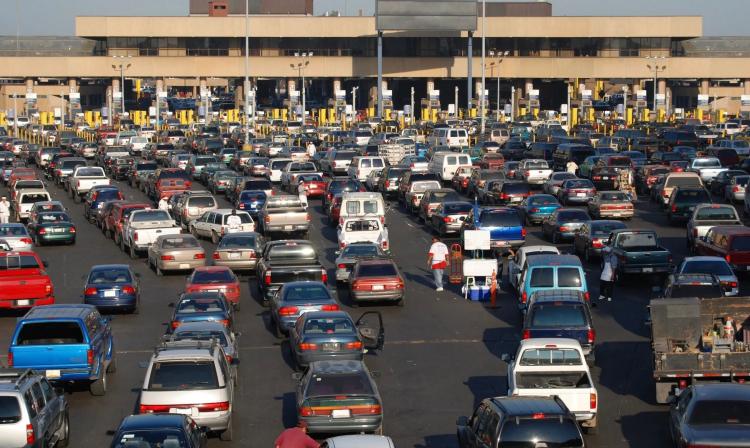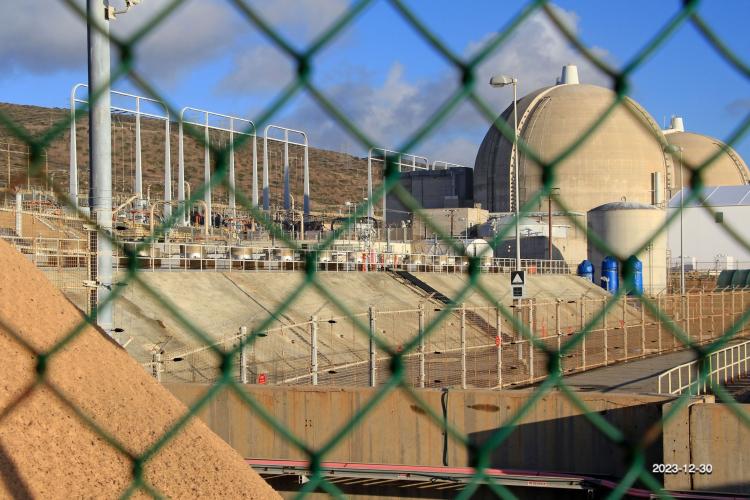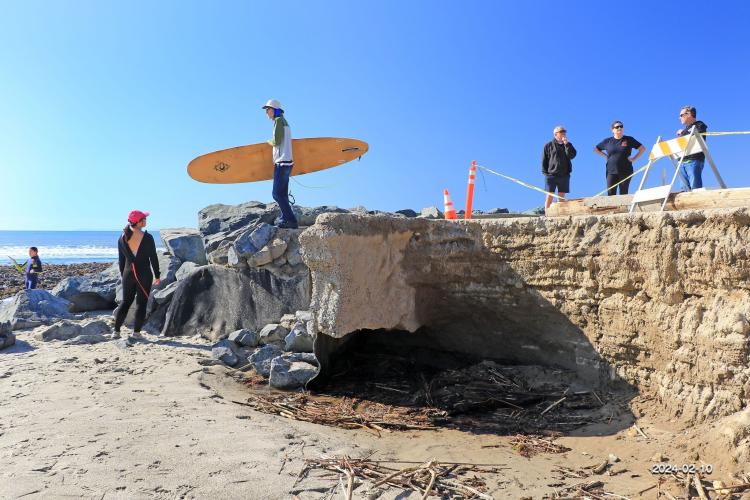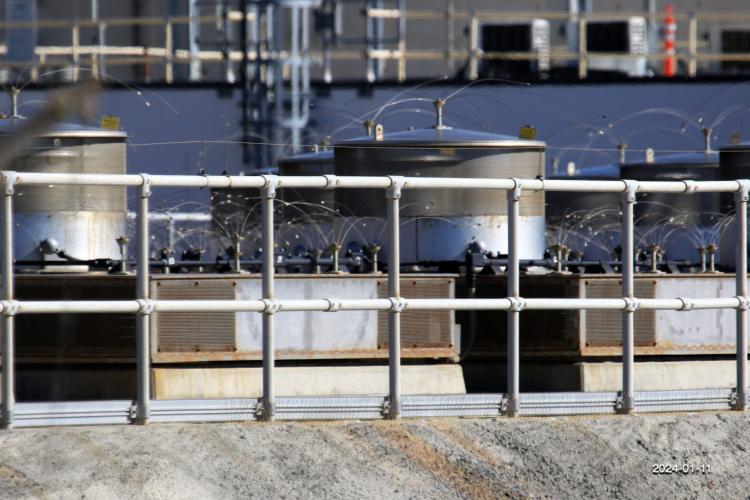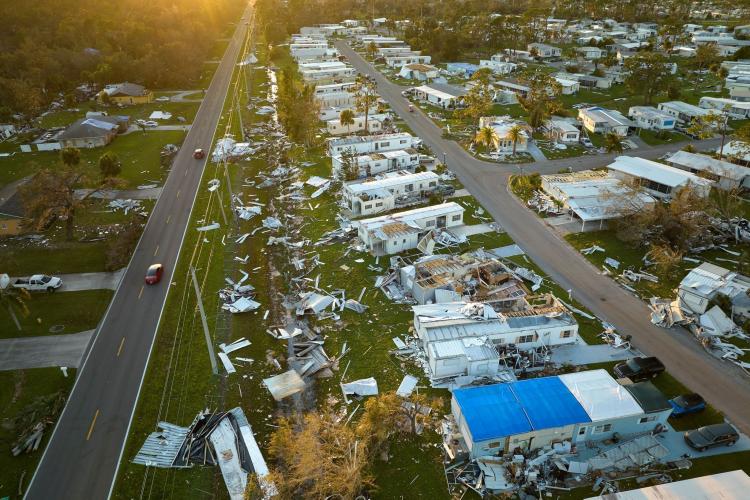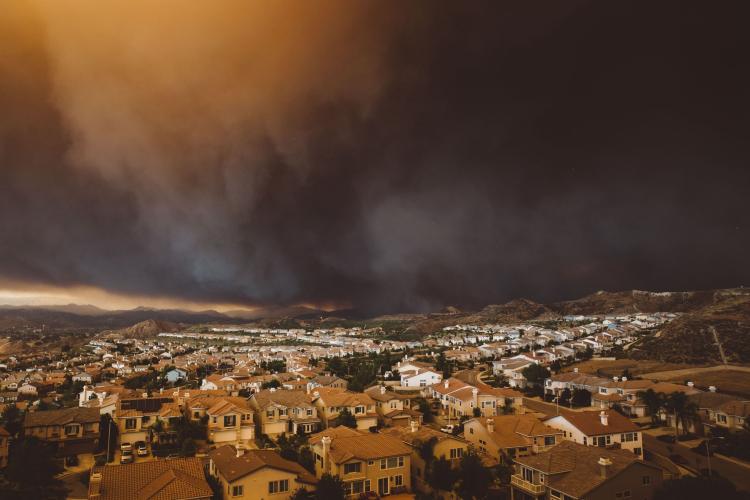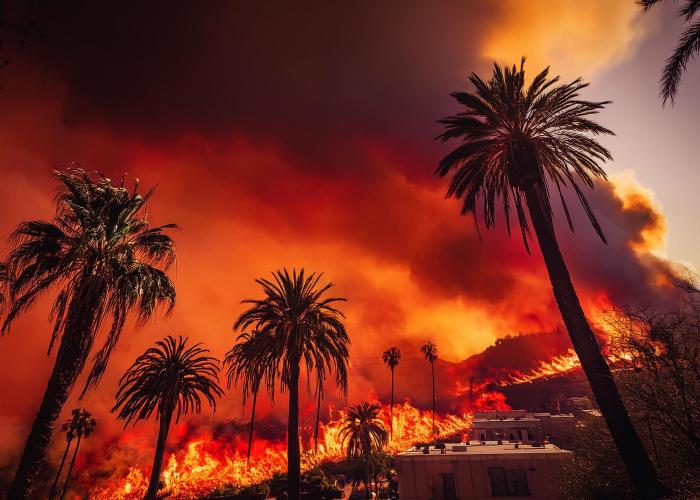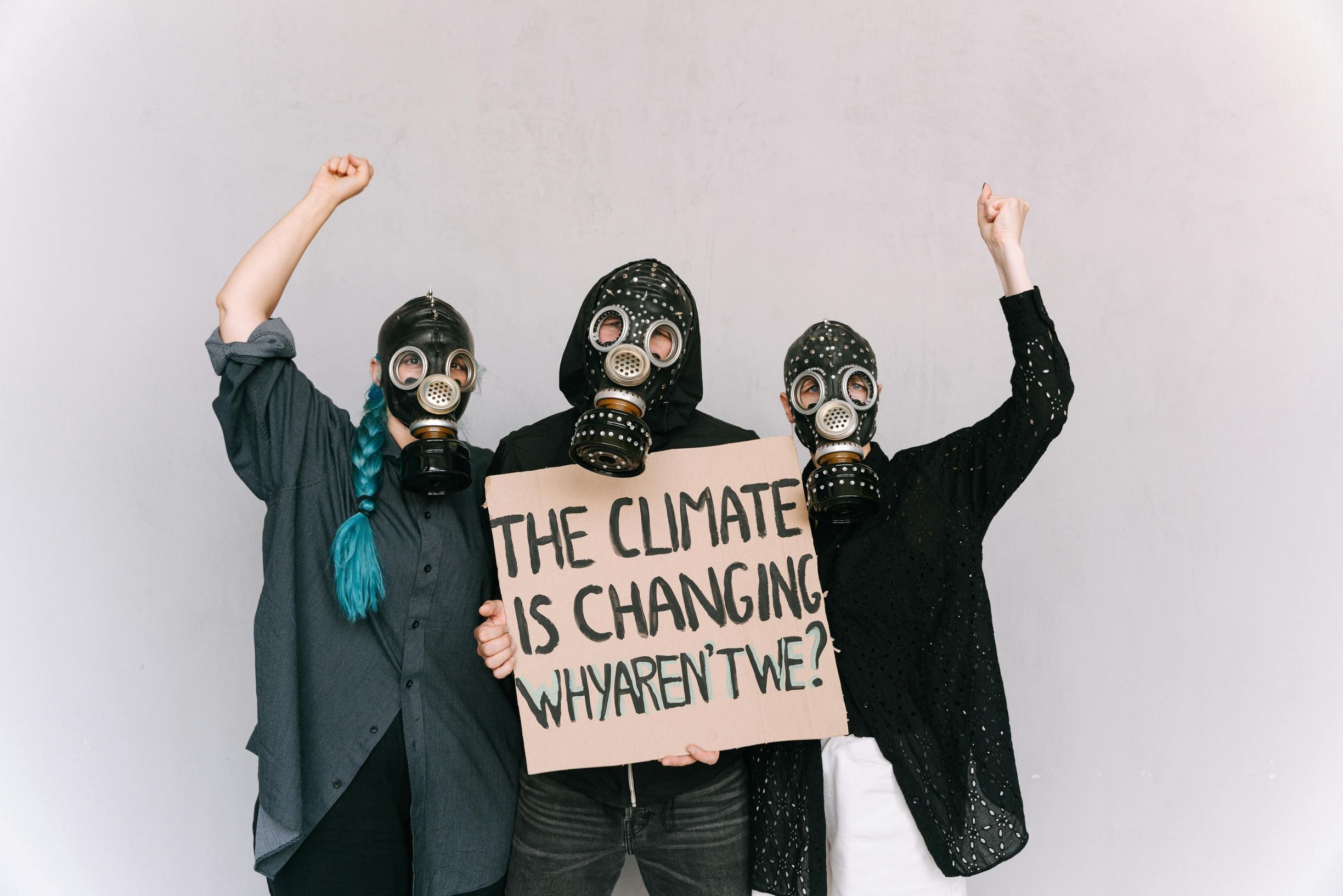
'The climate is changing. Why aren't we?'
Envato
Protesters pose wearing gas masks and holding a sign that reads ‘The climate is changing.’ The gas masks highlight concerns about rising carbon levels in the atmosphere.
When nuclear plants shut down but the waste stays behind, what happens to the people who trained for catastrophe?
Across America, millions of people find themselves in nuclear limbo, trained for disasters that authorities now say won't happen, while living next to toxic legacies that could endanger them for thousands of years.
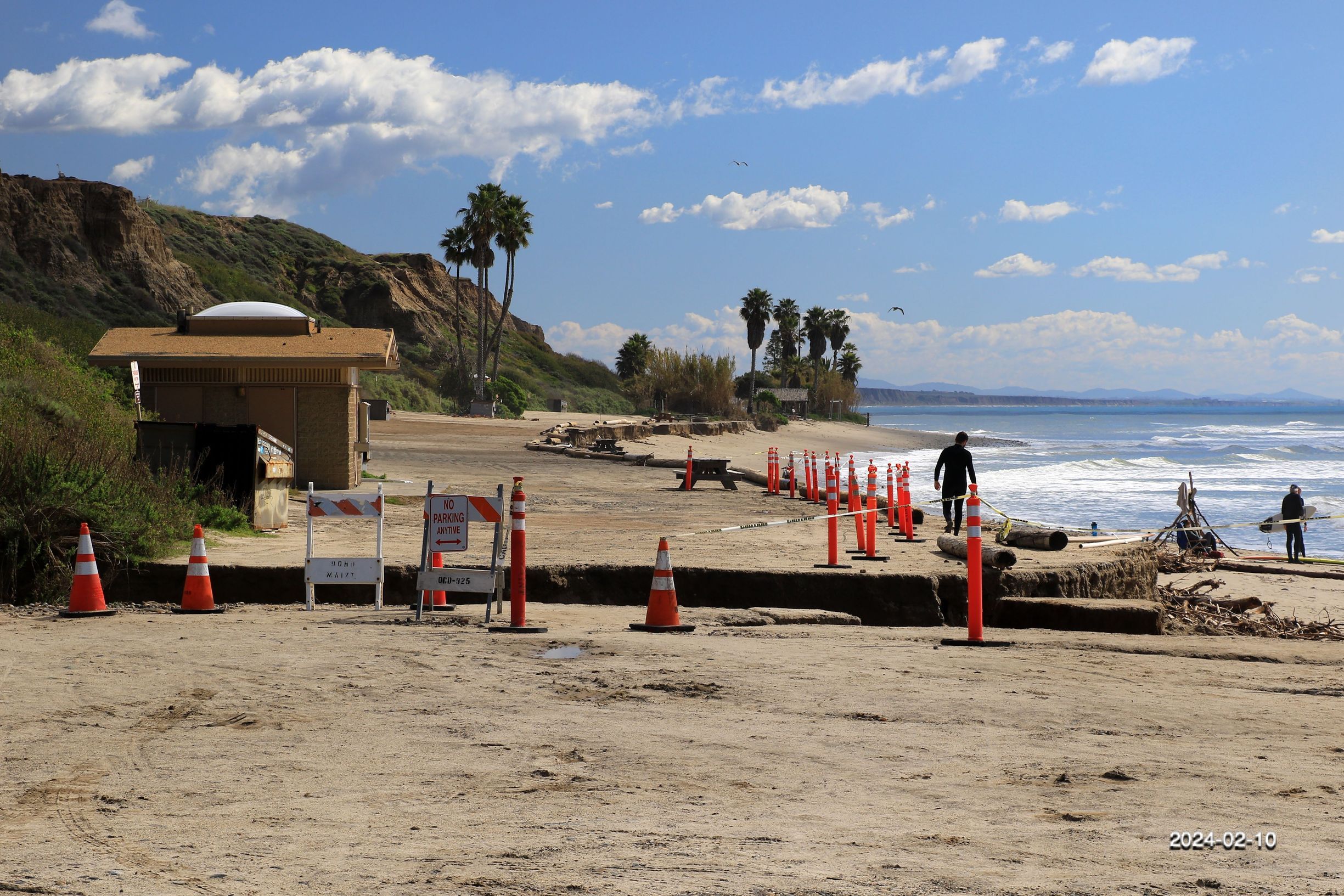
Crumbling Infrastructure Beside Nuclear Waste
Diane Edmonds
At San Onofre, storm damage highlights risks near stored nuclear waste. Residents face chronic danger without evacuation plans or insurance protections.

Crumbling Infrastructure Beside Nuclear Waste
Diane Edmonds
At San Onofre, storm damage highlights risks near stored nuclear waste. Residents face chronic danger without evacuation plans or insurance protections.
The Psychology of Invisible Threats
Unlike active reactors with clear emergency protocols, nuclear waste storage creates chronic anxiety without clear responses. Residents know there are no evacuation plans. Insurance policies don't cover radiation damage, leaving families financially vulnerable to accidents officials insist are impossible.
The contradiction is stark: communities prepared for acute emergencies now face chronic risks with diminished protections. Emergency coordinators trained for reactor meltdowns have no playbook for storage container failures or security threats.
Living with Nuclear Ghosts
This psychological landscape—being ready for catastrophes that can't officially happen—represents a new form of environmental trauma. Communities bear mental burdens of risks they're told not to worry about while carrying physical legacies of choices they never made.
From San Onofre's coastal storage to rural sites nationwide, the pattern repeats: waste remains while protections disappear. The infrastructure of fear—sirens, evacuation signs, emergency broadcasts—vanishes, but the source of that fear stays buried in their backyards.
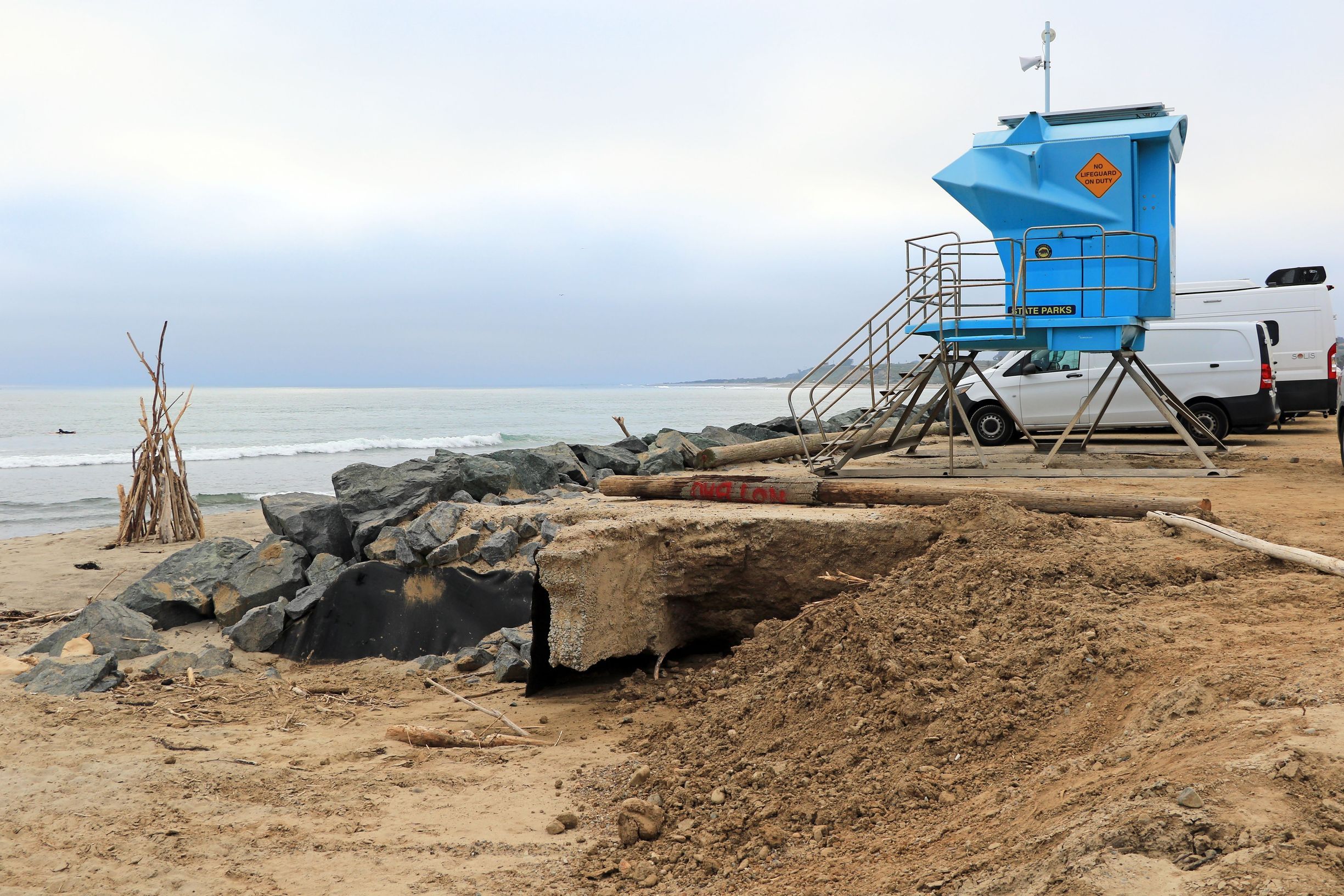
Surfing Next to a Nuclear Legacy
Diane Edmonds
San Onofre State Beach remains a surfing hotspot, yet sits beside long-term nuclear waste storage—raising questions of safety, preparedness, and community protection.

Surfing Next to a Nuclear Legacy
Diane Edmonds
San Onofre State Beach remains a surfing hotspot, yet sits beside long-term nuclear waste storage—raising questions of safety, preparedness, and community protection.
The New Nuclear Reality
As aging nuclear plants across America shut down, more communities will face this paradox. The emergency may be "over," but the emergency materials remain. The sirens go silent, but the toxic inheritance endures.
In nuclear America, the disaster that never came still shapes daily life. Communities trained for catastrophe now live in permanent limbo, prepared for emergencies that officially can't happen while surrounded by dangers that officially don't exist.
The Samuel Lawrence Foundation researches the intersection of nuclear policy and community wellbeing.
